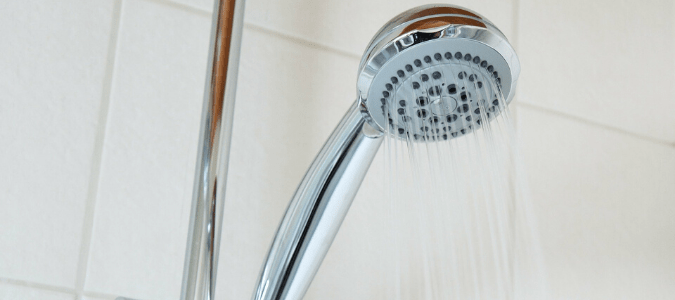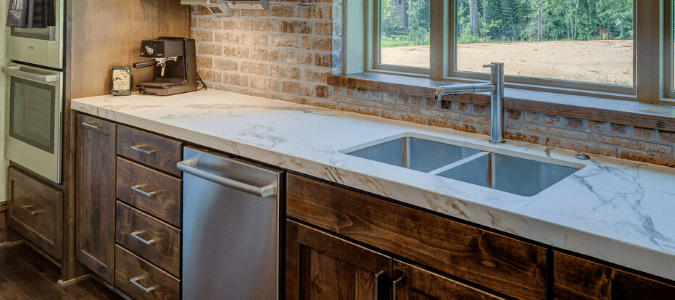In normal circumstances, tankless water heaters usually have many benefits. These types of heaters are known for saving homeowners money and providing hot water more quickly than other kinds of water heaters. But, when your tankless water heater is not heating properly, it can make for a really bad day—especially if it stops working when your friends or other guests are visiting.
There are several different reasons why a tankless water heater would not be heating.
Sediment Buildup
Over time, mineral sediments can build up in your water heater and throughout your plumbing system. This holds especially true if the water supply in your area is “hard” or has a high concentration of minerals. When this happens, water leaves behind particles of magnesium, calcium and other minerals wherever it goes. This includes your water heater, pipes, water filter and other parts of your home’s plumbing system.
If a thick layer of minerals builds up, these sediments can start to block water from flowing through your system, reduce the level of water pressure and prevent your water heater from working properly. Sediment buildup is especially a problem in tankless water heaters, which means it is important to regularly check these appliances for buildup. It’s also important to descale them at least once every year to keep them working their best for as long as possible. If you find yourself descaling your water heater more than once a year, it could be a sign of hard water.
Too Many Hot Water Fixtures Being Used at Once
If your household uses too many hot water fixtures at one time, then this can make it seem like your tankless water heater is not heating properly. For example, if you and a houseguest try to take hot showers at the same time that your child is trying to wash dishes, then it might overload your water heater.
A similar problem is when your shower starts out hot but then cold water starts flowing for a while before the hot water returns. This can happen if you are using a fixture that is far away from your water heater or if you have multiple people trying to use hot water back-to-back. There could be some hot water still left in the pipes, but this usually is not enough water for a full shower. After you run through the hot water that is left in the pipes, you will likely have some colder water come through before the heater gets a chance to pump out more hot water.
If this just happens once or twice, then you can try using fewer appliances at once to see if this fixes the problem. However, if your water heater still is not heating, then you might have another problem. For example, the water heater might have shut off when it was overloaded. If this is the problem, then resetting the unit should fix it.
Another possibility is that your tankless water heater is not big enough to supply enough hot water for your household. If this is the case, then you might consider buying an additional water heater or replacing your existing water heater with a higher capacity unit.
The Air Supply or Exhaust Is Blocked
At times, your exhaust or air supply might get blocked, which can cause your tankless water heater to stop heating. Many water heaters will automatically shut off as a way to protect the appliance and help prevent other safety hazards that could result.
One of the reasons this might be happening is that a vent pipe has gotten disconnected or has a hole. It can also happen if your water heater was installed too close to another appliance or other object. Similarly, even if your water heater originally had enough space around it, it is possible that something has gotten in its way. For example, an animal or pest like a wasp might have invaded the system’s space by building a nest or other barrier that is now blocking the air supply or exhaust vent.
Failed Ignition
It is also possible that an ignition failure is the reason why you have no hot water in your house. A good indication that you might have an ignition problem is if your water heater is showing an error message. This most often happens when there is some sort of supply issue, such as when the propane tank is empty or the water or gas valves are not open.
However, an ignition failure can also be a sign of a more complicated or serious problem like an electrical hazard. This is why it is best to contact a plumbing professional if you see an error message. They can help figure out what is wrong and help protect your family by fixing the issue quickly and safely.
Flame Failure
Similarly, basic supply issues can also cause the flame in your water heater to fail. However, if you are not having a supply issue, then a number of other problems, such as complications with your gas line, electrical wiring or venting, might be causing the flame failure.
Thankfully, an issue with a tankless water heater in your home does not have to be disastrous. If you contact a plumbing professional when you notice a problem, they can get to the root of the issue and can make all needed water heater repairs efficiently and effectively.
How to Descale a Tankless Water Heater
When it comes to descaling a tankless water heater, reaching out to a licensed plumber is usually the best option. These professionals have the specialized training and tools needed to clean out sediment buildup in your water heater. They also know how to keep it running in tip-top shape for as long as possible. However, if you choose to flush it on your own, it is wise to follow some important steps.
First, it is essential to regularly check your water heater for mineral buildup and debris that could be keeping the system from performing the way it should. Tankless water heaters typically need descaling once per year. But, a variety of factors could cause it to need cleaning more often. For example, if you live in an area that has hard water, then minerals might build up in your water system more quickly. In this case, your water heater may need to be flushed several times per year. If you’re in this situation, you may want to consider the pros and cons of water softeners.
Next, it is helpful to gather all the tools you need before trying to start a descaling project. Hardware stores often carry flush kits, which have most of the primary tools that you will need like hoses, a pump, descaler and a bucket. But, you can also buy each item on their own. It is also important to read the owner’s manual for your tankless water heater, which should have specific instructions for your particular model.
Steps to Descale a Tankless Water Heater
- Shut off any electrical power, gas or water flowing to the water heater. Depending on whether you have a gas or electric unit, this usually includes steps like disconnecting the electric power supply to the unit or closing the gas isolation valve. Make sure the circuit for the water heater is off and close the water shut-off valves for the unit.
- Next, release pressure in the system by opening the hot water pressure relief valve. Then, connect hoses to the service ports for hot water and cold water. After these are connected, put the pump from your flush kit in your bucket. Next, connect the hose from the cold water port to the pump and place the end of the hot water hose inside the bucket. Next, pour a cleaning solution meant for water heaters into the bucket.
- Once your system is prepared, open both of the service ports and turn on your pump. Let the pump run for at least an hour. This will circulate the cleaning solution through your tankless water heater and should flush out any sediment that has built up in the system.
- After the pump has finished descaling your system, turn off the pump, dump out the cleaning solution and drain any cleaning fluid that remains in the system.
- Lastly, restore your system by repeating the above process in reverse order. This includes removing the hoses from the service ports, reopening your valves, turning the water heater back on and restoring the water, gas and electrical supplies to the unit.
How to Reset Tankless Water Heater
Resetting a tankless water heater is often one of the easiest ways to get a heater working again. For some models, resetting your heater might be as simple as pressing the electric reset button. However, for other models, you might need to take additional measures if the reset switch has tripped. In this case, the best thing to do is to reach out to a licensed plumber. A plumber can make any needed water heater repairs.
ABC Can Fix and Maintain Your Tankless Water Heater
Anytime you’re dealing with a water heater problem, it’s best to leave it to the pros. If your tankless water heater is acting up, contact ABC Home & Commercial Services. We will be able to quickly diagnose and repair your water heater. We also offer ongoing maintenance where we clean your water heater and notify you of any potential problems.



